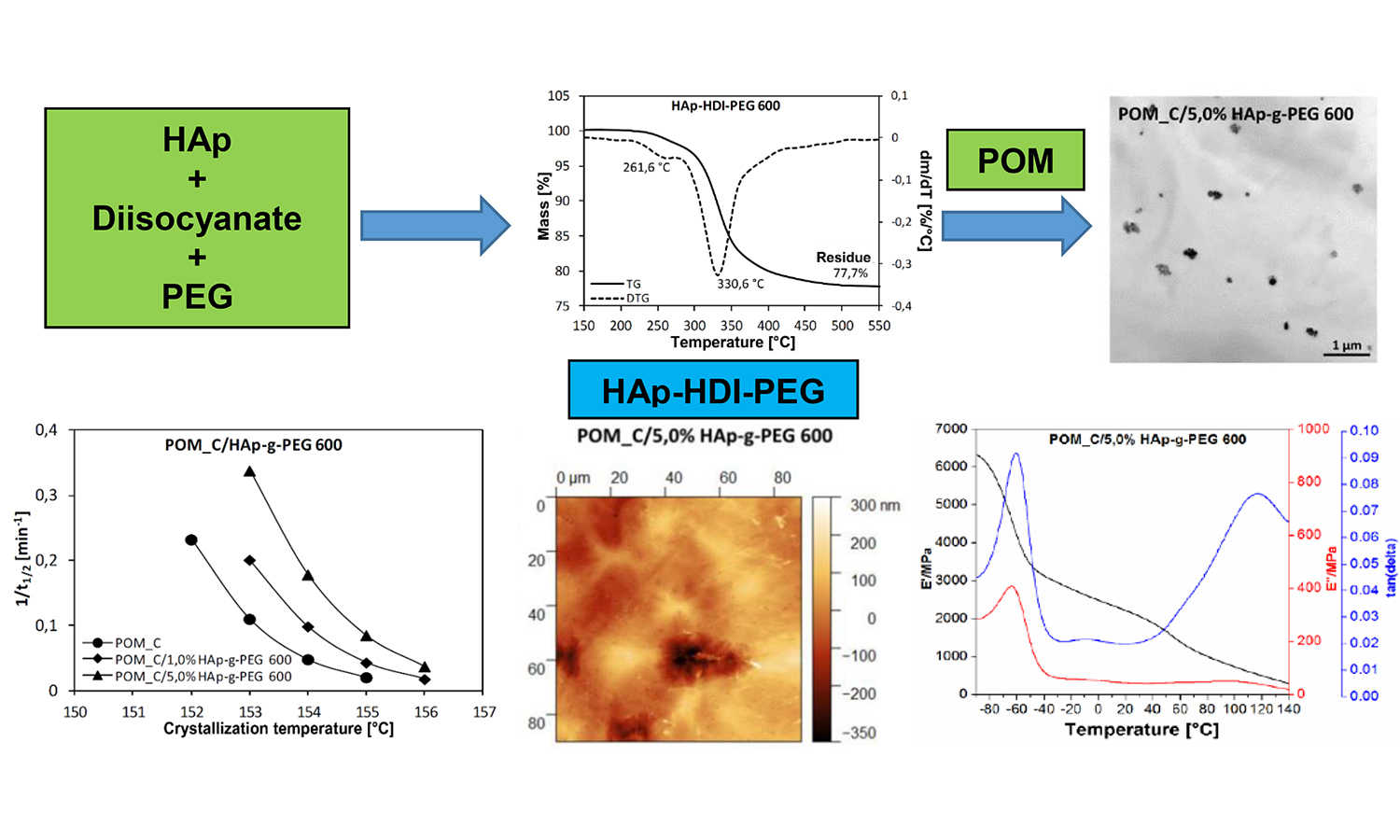The effect of functionalized hydroxyapatite on the crystallization process, morphology and thermomechanical properties of polyoxymethylene composites
Vol. 17., No.3., Pages 268-289, 2023
DOI: 10.3144/expresspolymlett.2023.20
DOI: 10.3144/expresspolymlett.2023.20
GRAPHICAL ABSTRACT

ABSTRACT
In this work, hydroxyapatite (HAp) was functionalized by using poly(ethylene glycol) (PEG) with different average molar mass and diisocyanates as linkers and then incorporated into the polyoxymethylene (POM) matrix by means of melt processing methods. The effectiveness of the functionalization process and the chemical structure of the obtained hybrid systems were analyzed using thermogravimetric analysis (TG), elemental analysis, and nuclear magnetic resonance (NMR) methods. In the next stage of research, the calculation of the POM crystallization kinetic parameters in the presence of the hybrid filler were calculated. Microscopic and dynamic mechanical analysis (DMA) tests, as well as 13C and 31P and nuclear magnetic resonance (NMR) analyses were done to show the effect of the HAp-g-PEG hybrid filler on the crystallization kinetics and crystallinity of the POM composites. Transmission electron microscopy (TEM) confirmed the uniform distribution of the HAp-g-PEG hybrid additives. Differential scanning calorimetry (DSC) tests did not show any significant effect on the key processing parameters, i.e. melting point and supercooling, which allowed the processing parameters to be maintained for all samples. The study of crystallization kinetics showed a three-dimensional process of POM crystals’ growth in the form of spherulites. The addition of HAp-g-PEG to POM significantly accelerated the crystallization process.




